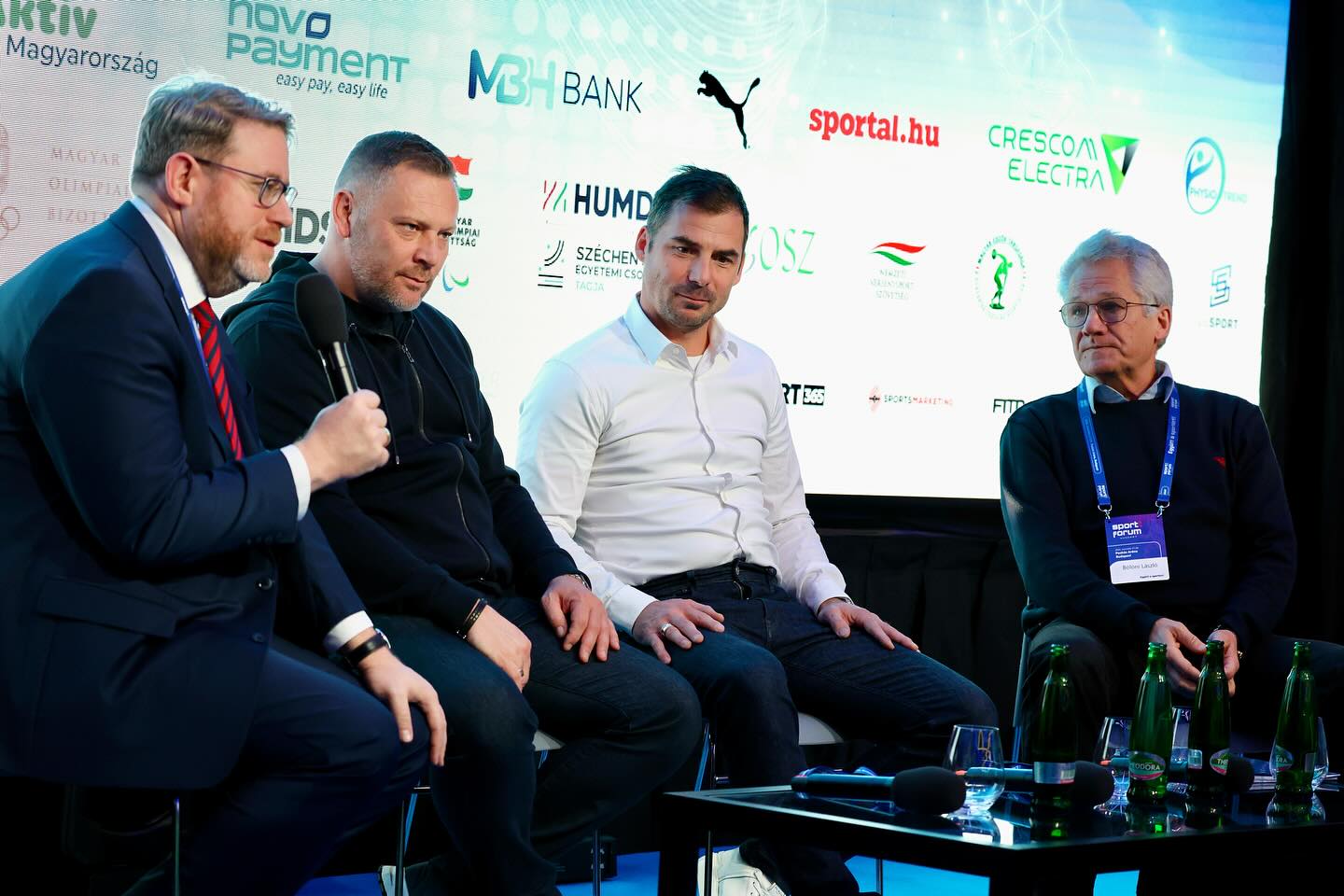Gambling, women’s sports and AI have immense potential to generate more revenues, and a new regional football competition promises further lucrative deals.
Hungary prides itself on being a sports nation. The Olympics is a big deal: in line with tradition, the country finished 14th on the Paris 2024 medal chart, and it ranks ninth on the all-time table. Fandom doesn’t equal fitness on a societal level, though. Hungarians are the third most obese nation in Europe, with men’s life expectancy looking particularly grim. But the business of sports is booming regardless and finds fertile soil in Hungary and across the CEE region.
Today, five million Hungarians play Tippmix, the sports betting game of the national lottery company, Szerencsejáték Zrt. As chief commercial officer Zsófia Bánhegyi highlighted, the most spectacular trend is the rise of e- and V-sports, with ever more people betting on the outcome of matches played on computer games and virtual sporting events played on computers.
Gen Z is another key target group to keep an eye out for: contrary to widely shared beliefs, it does not lack in interest for sports. Up to 40% are ready to pay for related content, although Gen Z is less interested in full game broadcasts and more so in highlights, clips and short analyses. Overall, the fact that global sports betting is forecast to double in the next eight years is a huge opportunity for the sector.
Several presentations drew attention to the untapped potential in women’s sports. An optimistic outlook is reflected in PwC’s recent Global Sport Survey, according to which more than 85% of respondents forecast double-digit growth over the next three to five years.


Record-breaking Year
“With unprecedented attendance and viewership of women’s events, 2023/24 was a record-breaking year that suggests a positive change in consciousness,” the report reads. The immense popularity of women’s handball in Hungary is a great indication of this phenomenon in this country.
Broadcasting is also bound to be shaped by female sports engagement. Despite women making up approximately 40% of all participants in sports, only 15% of media coverage is dedicated to them. There is also room for improvement when it comes to finance. The latest Forbes highest-paid athletes list didn’t include a single lady, and just 4% of global sponsorship spending goes to individual female athletes or women’s teams.
PwC experts spoke about the changing dynamic of hosting major events, given that Hungary is toying with the idea of a 2036 Olympic bid. These insights shed light on how differently certain aspects of the issue are perceived in the region and globally.
A remarkable difference emerges when it comes to who is expected to finance such events: in CEE, 65% believe it should be mainly the government’s job to do so, whereas globally, that rate is just 50%. Financial concerns are identified as a top potential barrier regardless of the location of respondents. On the other hand, in CEE, more count on the benefits of infrastructure developments (33%) than globally (25%).
Olympic Catalyst
Árpád Kelemen, the director of PwC Sport, said the Olympic games could serve as a great catalyst to implement projects that are long overdue, such as the so-called student city or a direct rail connection from the airport to the center of Budapest. Thanks to previous developments, up to 95% of competitions could be carried out already in the Hungarian capital.
The 2023 Athletic World Championship further showcased the enormous economic impact a large-scale event can have. Some 29,000 foreign visitors accounted for 180,000 guest nights, generating HUF 10 billion in revenues, and the number of young people taking up athletics on a more serious basis has risen steeply. But it can prove to be a double-edged sword.
“In Rio, for instance, organizers overspent by USD 4.4 bln, which equals the total budget of the 2024 Paris Games,” Kelemen pointed out. He pointed to one of the principal conclusions of the survey, that in the future, new commercial and hosting models will be required for major events, including a more frequent shift to co-hosting.
The business of sports is being disrupted by AI and innovation and will continue to be so. Injury prediction, fan experience enhancements, and tailor-made training programs are already happening. Down the road are things like climate change-triggered night events (assuming it will be too hot to compete in daylight hours), and robot or tech-enabled athletes.
But if you just want to stick to old-fashioned wisdom, take away what coaching icons Pál Dárdai and László Bölöni suggested: work harder, and if there’s not enough money available, come up with more ideas.
Yet More Soccer in the Pipeline
Football fans have got used to the fact that Uefa, the European governing body for soccer, is striving to squeeze out ever more money from the beautiful game. But now it seems a similar effort is taking root at the regional level with the push for a whole new club football competition.
The idea is to change the currently imbalanced conditions where 75% of TV rights revenues amounting to EUR 17 billion land with the top five European leagues, whereas the bottom 49 get only EUR 5.7 bln. Thirteen countries from CEE to the Baltics and Greece plan to set up a system that would drum up more interest and deals for top clubs from the respective regions.
“National championships would continue to be respected as they represent an important value, but it is in the interest of the teams in the region to play as many quality matches as possible so that they can perform better in the major European cups,” Olivier Jarosz said on behalf of LTT Sports.
Asked when the matches of this league could take place, he said that the period between April and June would be appropriate, because by then the teams from the region have normally been knocked out of Uefa competitions.
“We hope that Uefa would also finance the league, and some private capital could be attracted,” Pál Orosz, CEO of FTC Labdarúgó Zrt. added. “I think that once we have the financial backing, we will find a way to run it.”
This article was first published in the Budapest Business Journal print issue of December 13, 2024.












